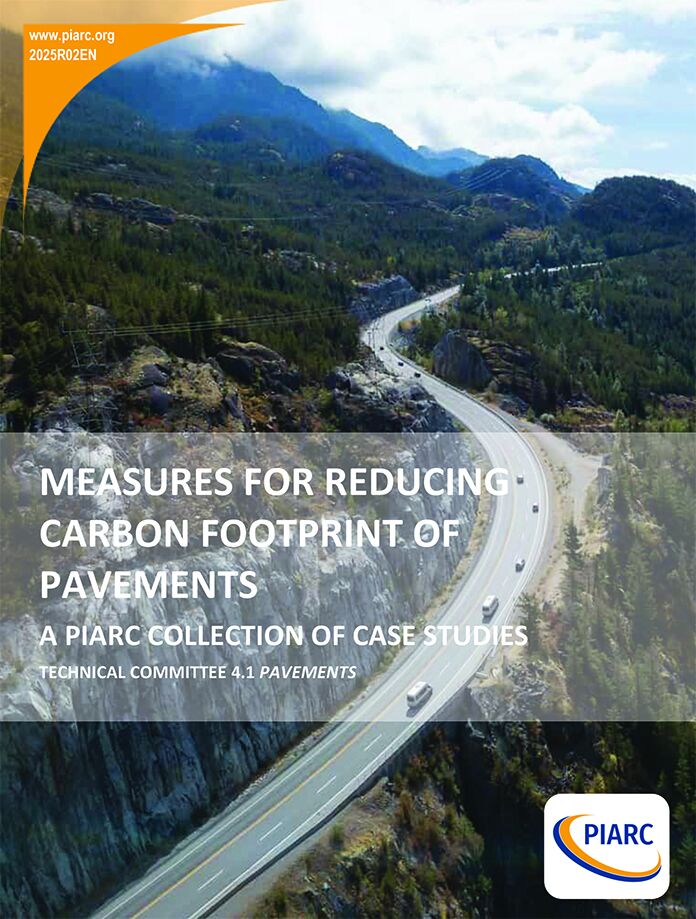Measures for Reducing Carbon Footprint of Pavements - A PIARC Collection of Case Studies

This report contains a collection of case studies on measures to reduce
the carbon footprint of pavements, leveraging the collective expertise
and efforts of the authors, including contributions from experts
worldwide, including from low and middle-income countries.
The case
studies include the various stages of emissions of the materials across
their life cycle, including the Product Stage (A1-A3), Construction
Stage (A4-A5), Use Stage (B1-B7), End of Life Stage (C1-C4), and reuse,
recovery and/or recycling potentials (D) as defined in EN 15804. In
addition, some of the case studies implement different carbon footprint
calculations methodologies to quantify the carbon footprint reduction of
the adopted strategies demonstrating their potential environmental
benefits.
Some of the measures to reduce the carbon footprint
include the implementation of sustainable materials, technologies or
construction methods. These experiences reinforce the growing emphasis
on sustainability within the transportation sector, and highlight the
ongoing efforts to reduce the environmental impact of roads while
maintaining their vital role in economic and social development. The
innovative technologies presented in this collection offer valuable
opportunities for learning and practical implementation.
Information sheet
- Date: 2025
- Author(s): Comité technique / Technical Committee / Comité Técnico 2020-2023 4.1 Chaussées / Pavements / Pavimentos
- Domain(s): Road Policies / Environment / Road Pavements / Road Resilience
- Type: 2025R02EN - Technical Report - A PIARC Collection of Case Studies
- PIARC Ref.: 2025R02EN
- ISBN: 978-2-84060-779-3
- Number of pages: 175